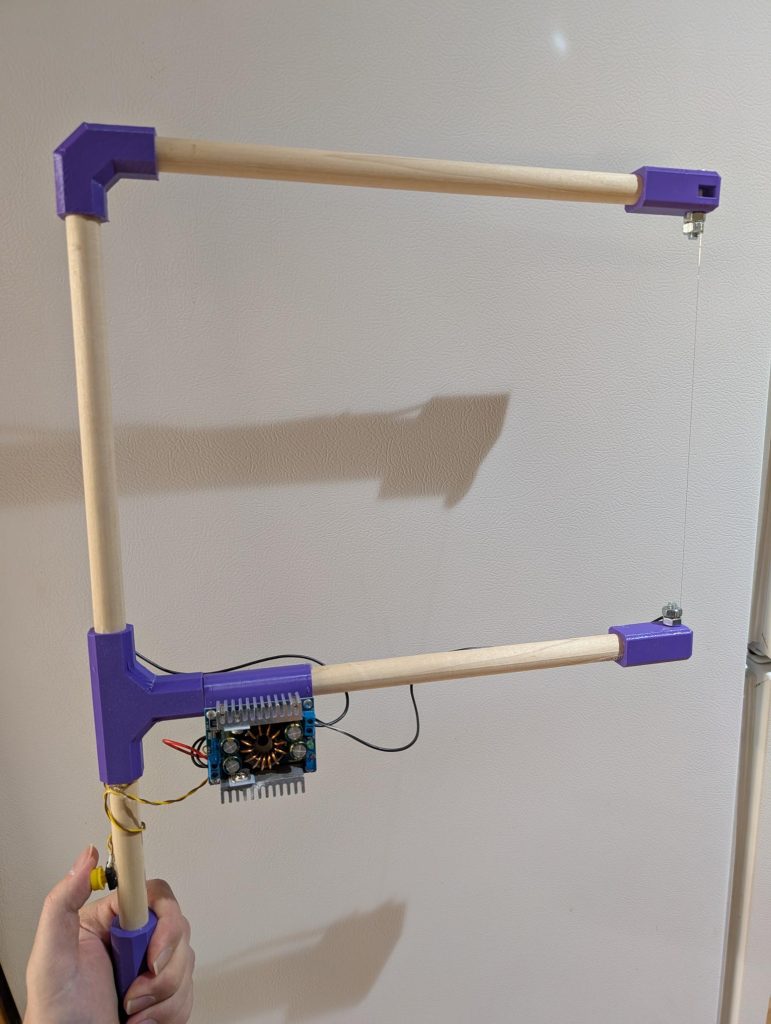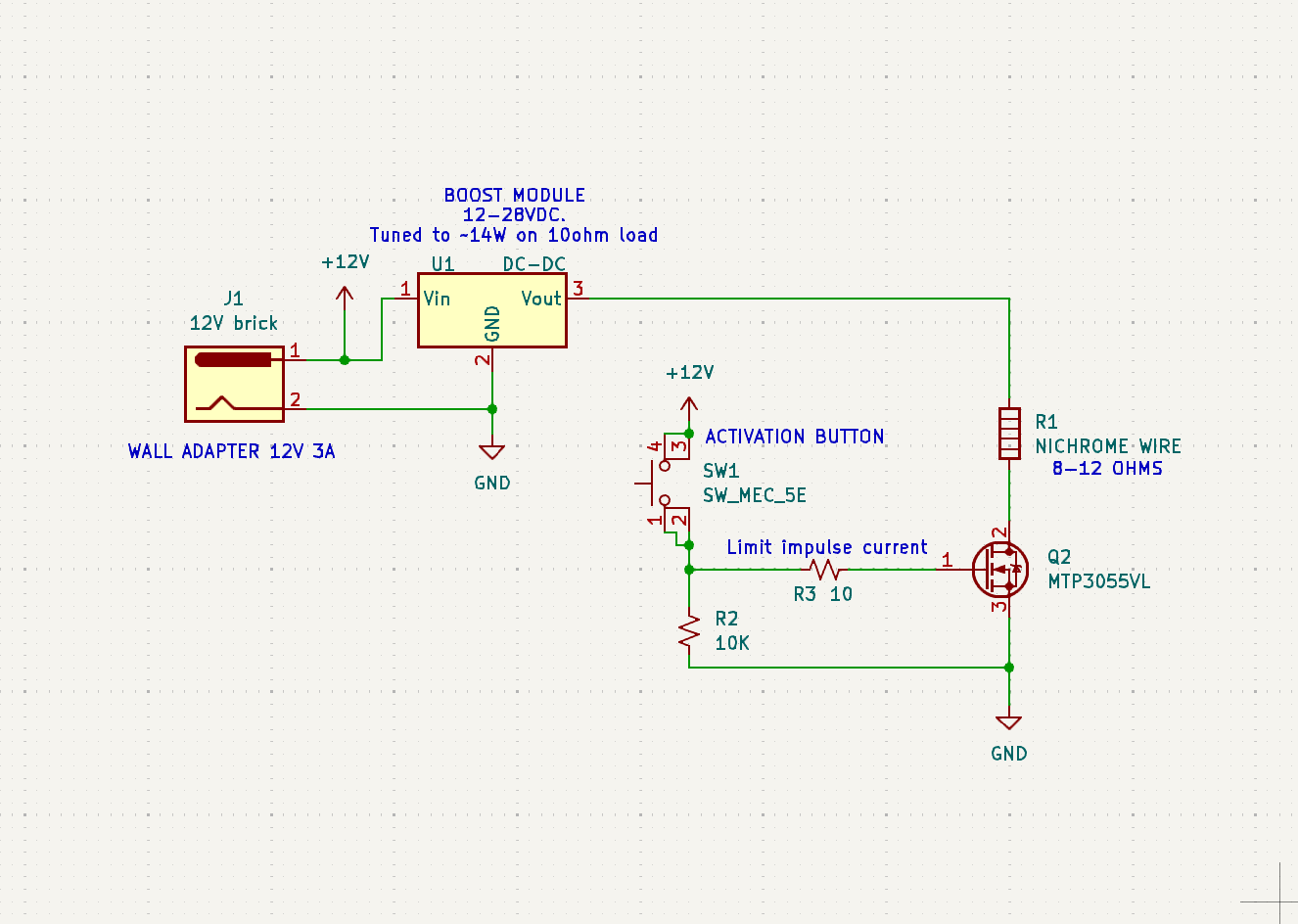
This project came about after storing loads of Styrofoam pieces over time, mainly from shipped furniture after moving. The plan was to break down all the packing foam I had into rectangular pieces that can be repurposed for packing or storing fragile items.
NOTE: Nasty fumes are produced by using these types of cutters and there is a burn/fire hazard with using exposed, very hot, nichrome wire. I accept no responsibility for someone trying to make one of these themselves. Cuts were made in a well-ventilated area with a respirator.
I’ve always wanted to make a “Nichrome Knife”; A resistive wire passing enough current to get hot enough for melting various foam materials. Since first seeing builds of these online years ago, I finally spent some free time to slap one together! I decide on 3D printing some joints and using 5/8″ wooden dowels for the main structure. With care not to hold the “ON” button too long, the nuts/fasteners on the ends do not soak up heat up enough from the wire to melt the plastic brackets. I’m counting that as a win!
I found 15-20W of power across 12″ of wire offers plenty of styro-melty goodness. Using a dc/dc step up converter allowed me to connect a standard 12V 3A AC/DC brick power adapter as the input source and tune the voltage on the fixed resistance of the wire to adjust output power for more heat, if cutting dense foam… or less heat if stuff is bursting into flames.

The clever thing here is the momentary push-button. It would melt if it had to pass more than 1 Amp of current. It is wired to a simple N-channel Mosfet acting as a low-side switch. The push button simply feeds 12V to the gate of the Mosfet, allowing the load (nichrome wire) to ground through the drain to source junction. This allows virtually any momentary push-button to be used.
Fun note: Due to gate capacitance on the Mosfet, there can be a large (~1A) current spike through the push button until the Mosfet’s gate is charged. This is for such a brief amount of time, it is not very likely to wear out the push button but it’s something to think about. The resistor R3 in the picture is there to limit this.